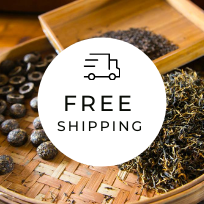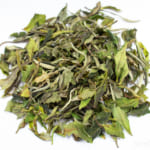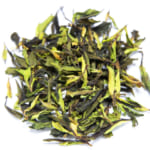- HOME >
- How to enjoy tea
Easy Way to Prepare Flavorful and Warm Tea at the Workplace

Have you ever experienced the transformation of tea stored in a thermos or water bottle at work, turning into a brown hue and acquiring a bitter, astringent taste? As this has piqued the interest of many, I would like to offer a more in-depth explanation for a solution.
Tea stored in a thermos undergoes oxidation due to heat
Tea is rich in polyphenols, serving as antioxidants that act as protective shields. These antioxidants undergo oxidation themselves, preventing the oxidation of other substances—hence the term “antioxidants.” Because of this inherent quality, the antioxidants in tea are highly prone to oxidation. When warm tea is stored in a water bottle or thermos, oxidation occurs, resulting in green tea adopting a color akin to black tea, accompanied by an intensified astringency.
In particular, catechins, a type of polyphenol in tea, undergo oxidation and conjugate with each other, resulting in the formation of tannins. These tannins are responsible for the brownish color and astringency. Once tannins are formed, the process cannot be reversed. Freshly brewed green tea undergoes a transformation into a brownish tea, resembling an incomplete version of black tea.
Moreover, oxidation goes beyond polyphenols; chlorophyll, a green pigment present in tea leaves, also undergoes oxidation. Chlorophyll contains magnesium at its molecular center, and during oxidation, the bonds holding magnesium break, leading to its liberation. The released magnesium significantly contributes to the astringency and bitterness. For further details, please refer to the following column.
https://hojotea.com/en/posts-225/
How to easily enjoy delicious tea at the workplace?
Storing hot tea for an extended period can lead to oxidation and a change in color to brown. However, if you refrigerate the tea, it remains fresh with minimal oxidation. To achieve this, brew a highly concentrated tea, chill it, and bring it to work in a thermos. You can then mix this concentrated tea with hot water.
The key points to consider are as follows:
- Use a minimal amount of hot water, aiming for around 200ml for 5g of tea leaves.
- Allow the tea to steep for nearly 30 minutes to extract the maximum flavor intensity.
- Cool the brewed tea rapidly and thoroughly.


Detailed brewing instructions
There are various types of tea, such as Japanese tea, black tea, and oolong tea, but you can generally follow the same method.
First, preheat a teapot and add 5g of tea leaves with 100-200ml of hot water. Cover it and let it steep for about 30 minutes. For the concentrated tea base, make it as strong as possible. When drinking tea at work, dilute the base tea with hot water, aiming for about a 5 times dilution. For example, if you want to drink 100ml of warm tea, use 20ml of the base. By preparing 200ml of the base, you can enjoy the equivalent of at least 1 liter of tea.
This method may seem unconventional with a 30-minute steeping time, but it surprisingly results in flavourful tea. Moreover, when diluted five times with hot water, the tea remains as hot as freshly brewed tea. Mastering this technique allows you to effortlessly enjoy delicious tea during your workday.

When bringing tea to the workplace, there’s no need to brew it on the same day. You can prepare the tea a day in advance, refrigerate it, and it will remain fresh for about three days. The crucial factor is to rapidly cool down the concentrated tea, minimizing the oxidation of the hot base tea. This ensures that the tea maintains its freshness and flavor, allowing you to enjoy a delightful cup even when prepared in advance.
Related Articles
How to get the latest update on HOJO Tea?
1. Follow Twitter, 2. Click "Like" on Facebook, and 3. Subscribe in newsletter. You can have the latest tea news from HOJO Tea.
 Subscribe the Newsletter to enjoy the privileges
Subscribe the Newsletter to enjoy the privileges- You may receive a free sample upon purchase, or you may have the priority to purchase special products. So please remember to subscribe our newsletter as well as the social network.
- Yunnan Chun Jian Green Tea from High Mountain Gardens
- Yunnan Chun Jian Green Tea is now available.This tea is made from naturally grown leaves harvested from high mountain gardens at 2100m above sea level. It has a rich, long-lasting lingering aftertaste, comparable to raw Pu-erh tea. Yunnan as a Distinctive Tea Growing Region Over the past 20 years, we have explored a wide range …
- Limited Loose Leaf Release of 2025 Da Xue Shan Wild Raw Pu-erh Tea
- We have released the 2025 loose-leaf version of Da Xue Shan Wild Raw Pu-erh Tea.This tea comes from wild tea trees that grow naturally in the high mountains of Yunnan Province, at elevations above 2000 meters. This year, we were only able to secure a small quantity for retail, and the current release is available …
NEW ARTICLES
 Yunnan Chun Jian Green Tea from High Mountain Gardens
Yunnan Chun Jian Green Tea from High Mountain Gardens- Yunnan Chun Jian Green Tea is now available.This tea is made from naturally grown leaves harvested from high mountain gardens at 2100m above sea level. It has a rich, long-lasting lingering aftertaste, comparable to raw Pu-erh tea. Yunnan as a Distinctive Tea Growing Region Over the past 20 years, we have explored a wide range …
 Limited Loose Leaf Release of 2025 Da Xue Shan Wild Raw Pu-erh Tea
Limited Loose Leaf Release of 2025 Da Xue Shan Wild Raw Pu-erh Tea- We have released the 2025 loose-leaf version of Da Xue Shan Wild Raw Pu-erh Tea.This tea comes from wild tea trees that grow naturally in the high mountains of Yunnan Province, at elevations above 2000 meters. This year, we were only able to secure a small quantity for retail, and the current release is available …
 2025 Da Xue Shan Wild White Tea Now Available from Yunnan
2025 Da Xue Shan Wild White Tea Now Available from Yunnan- The 2025 harvest of Da Xue Shan Wild White Tea is now available. Crafted from truly wild Camellia taliensis trees growing naturally in the high-altitude forests of Yunnan, this tea offers a purity and character unique to its origin. This year’s unusually dry climate during the withering season was ideal, resulting in a floral and …
 Why Do Some Teas Taste Astringent? Exploring the Causes and Mechanisms of Astringency
Why Do Some Teas Taste Astringent? Exploring the Causes and Mechanisms of Astringency- Tea can range from having no noticeable astringency to possessing a very strong one. What causes this astringency? This article explores the causes and mechanisms behind astringency in tea. Causes of Astringency Astringency arises from the binding of tea components to proteins in the oral cavity, creating a sensation of tightness or dryness. The tongue …
 The Impact of Heat Sources on Tea Flavor
The Impact of Heat Sources on Tea Flavor- It is widely recognized that the material of a kettle plays an important role in shaping the taste of water for brewing tea. Yet, an often overlooked but equally significant factor is the type of heat source used to boil the water. Different heat sources, whether gas, electric, charcoal, or wood fire, can impart distinct …
 New Release of High Mountain White Tea
New Release of High Mountain White Tea- We are pleased to introduce our High Mountain White Tea, sourced from a unique tea garden with two key features: 1. Located at an altitude of 2200-2300m2. Completely wild and untended The ideal natural conditions of this garden result in tea of exceptional quality, offering a pure and gentle, nourishing taste. High Altitude and Wild …
 New Release of Da Xue Shan Wild White Tea 2024
New Release of Da Xue Shan Wild White Tea 2024- We have released the 2024 Da Xue Shan Wild White Tea Loose Leaf. This tea was produced under our direct supervision during our stay in Yunnan Province, ensuring meticulous production management on site. Definition of Wild Tea in Yunnan Province People in Yunnan strongly associate Camellia taliensis with wild tea, regardless of where it is …
 New Release of Wild Pu-erh Jasmine Pearl
New Release of Wild Pu-erh Jasmine Pearl- Out of curiosity, we decided to create a jasmine tea based on Da Xue Shan Wild Raw Tea. This resulted in an exceptionally rare tea, not only in Japan but also in China. Custom Production Network for Jasmine Tea At our store, we source various types of base teas from different regions during the spring. …
 2024 Overview: Our Yunnan White Tea Quality, Process, and Weather Insights
2024 Overview: Our Yunnan White Tea Quality, Process, and Weather Insights- One of the teas we’ve been focusing on in Yunnan Province is white tea. Historically white tea has been produced in both Fujian Province and Yunnan Province for a long time. While white tea from Fujian Province is well-managed during processing, we are dissatisfied with the quality of the raw materials due to the use …
 Yunnan’s Hospitality Culture: Expressed Through Meals
Yunnan’s Hospitality Culture: Expressed Through Meals- In China, as a form of greeting, it’s common to say “你吃饭了吗?” which means “Have you eaten?” However, in Yunnan Province, the phrase “吃饭” is often used in various situations, more like “Eat, eat,” serving as an invitation to share a meal. Yet, with prolonged exposure to Yunnan, one comes to understand that these meal …
Shop Info

Address:Lot No. T-215, 3rd Floor, The Gardens Mall, Mid Valley City, Lingkaran Syed Putra, 59200 Kuala Lumpur
Tel: +603-2287-4537
Business Hour: 10am to 10pm
Category
- New Arrival at HOJO Online Shop
- Featured Articles
- Newsletter
- Types of Tea
- Origin of Tea
- Teapot and Tea Equipment
- Tea Column
- How to enjoy tea
- Tea Processing
- How to choose quality tea
- Tea constituents and functional effect
- Safety of Tea
- Foods
- Tea Business Operation
- Hobby and Outdoor Activity
- Ranking of Tea
- Video
- FAQ
- Media Release
Profile

- AKIRA HOJO
- I invite you to experience my tea selections.I was born in Nagano, Japan. In university, I studied agricultural chemistry, and I have the master degree in food science. I worked in Japanese food industry for 10 years. I involved in R&D, QC and QA. As a factory manager, I implemented ISO9000 series and managed the factory.
- The Art of Tea Magazine
- We posted the article on “The Art of Tea Magazine No.9, the magazine is published in Taiwan. We featured some scientific view about the tetsubin
- New Straits Times
- The Malaysian National Newspaper, New Straits Times featured HOJO Tea on 17-Oct-2007.















